Published
- 11 min read
Best Qovery Alternatives in 2025 for Scalable App Deployment

Introduction
Qovery is known for simplifying application deployment on AWS by providing a developer friendly interface for infrastructure and Kubernetes orchestration. It helps teams launch full stack apps faster without needing to write complex YAML files or manage clusters directly.
However, many growing teams eventually look for even more automation, predictable pricing, lighter operational load, and full stack deployment flexibility. That is when developers begin exploring Qovery alternatives that reduce manual intervention and cost-related surprises.
“In this guide, we compare the top Qovery alternatives in 2025, including Kuberns, which offers AWS-backed scalability, automated deployment, and up to 40% savings on cloud infrastructure.”
What to Look for in a Qovery Alternative
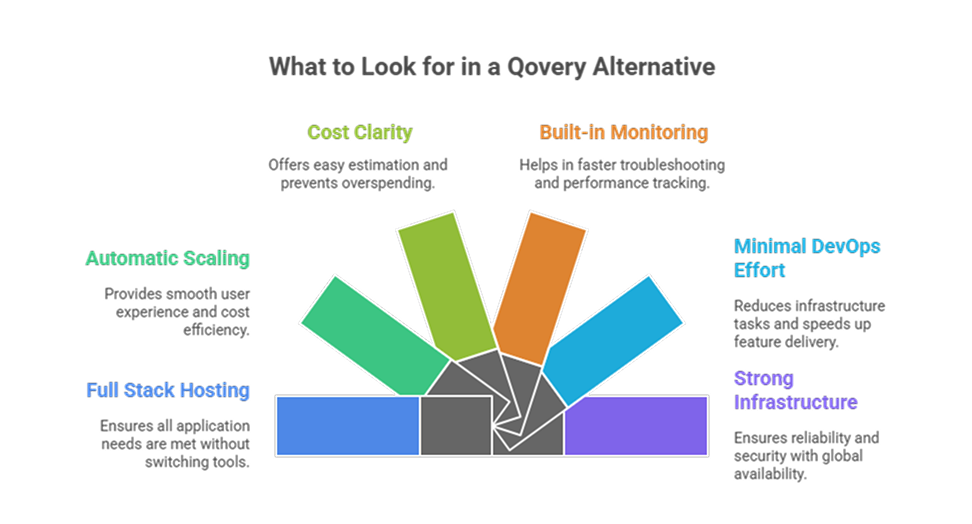 When you are choosing a replacement for Qovery, it is important to evaluate not just the deployment workflow but also how the platform performs when your product moves into real production growth. The right platform must support fast iteration, strong automation, and sustainable cloud spending.
When you are choosing a replacement for Qovery, it is important to evaluate not just the deployment workflow but also how the platform performs when your product moves into real production growth. The right platform must support fast iteration, strong automation, and sustainable cloud spending.
Here are the capabilities that matter most:
Full stack hosting flexibility
Your platform should support everything your application needs, including:
- Web servers and APIs
- Containers and microservices
- Background workers and cron jobs
- Persistent databases and storage services
A true alternative should make full stack deployment easy without switching tools.
Automatic scaling and traffic handling
Traffic patterns change constantly. Look for platforms that:
- Scale resources automatically during peak usage
- Reduce cost during slow hours
- Prevent downtime during traffic surges
This ensures a smooth user experience without manual intervention.
Cost clarity and optimization
Many teams move away from Kubernetes based platforms due to pricing complexity. A strong alternative should offer:
- Pricing that is easy to estimate
- Visibility into resource usage
- Automation that prevents overspending
Learn more about this in How to Reduce AWS Cost
Built in monitoring and alerts
If monitoring requires separate tools, developers lose time and context. A better solution:
- Provides logs and metrics out of the box
- Includes alert rules for performance and reliability
- Helps developers troubleshoot faster
Minimal DevOps effort
If your team is spending too much time configuring environments, patching servers, or managing clusters, growth slows down. A strong alternative should help you ship product features faster with fewer infrastructure tasks.
Reliability backed by strong infrastructure
Look for platforms built on trusted cloud providers with:
- Global availability zones
- Enterprise grade security
- Automatic failover and redundancy
Kuberns checks all of these criteria by combining AWS reliability with a fully automated deployment experience. Developers get full stack hosting, cost savings, built in monitoring, and zero Kubernetes complexity, allowing teams to grow faster with fewer operational demands.
Learn more about how Kuberns simplifies modern cloud deployment: What Is Kuberns: The Simplest Way to Build, Deploy, and Scale Full Stack Apps
Top Qovery Alternatives to Consider in 2025
Developers who like the simplicity of Qovery usually want a tool that streamlines deployment, scaling, and monitoring without the operational overhead of managing Kubernetes. Here are the best platforms to evaluate in 2025 if you are exploring alternatives to Qovery.
1. Kuberns
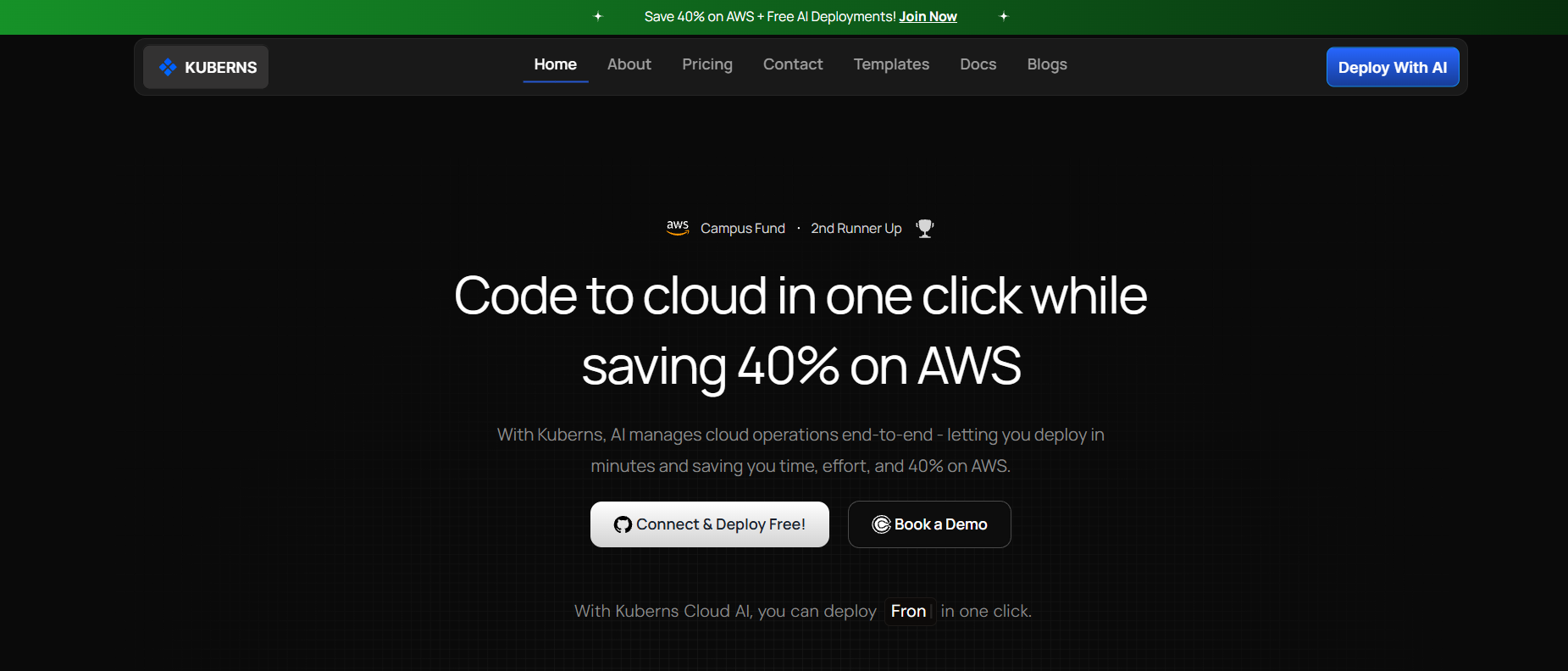 Kuberns is an AI powered deployment platform that runs on AWS and gives developers a seamless way to deploy full stack applications directly from Git. Instead of handling clusters, networks, and infrastructure manually, Kuberns automates the full lifecycle of provisioning, scaling, monitoring, and cost optimization. It works for both monolithic apps and microservices, which makes it a strong choice for teams moving from MVP to production.
Kuberns is an AI powered deployment platform that runs on AWS and gives developers a seamless way to deploy full stack applications directly from Git. Instead of handling clusters, networks, and infrastructure manually, Kuberns automates the full lifecycle of provisioning, scaling, monitoring, and cost optimization. It works for both monolithic apps and microservices, which makes it a strong choice for teams moving from MVP to production.
Why Teams Prefer Kuberns
- Full stack support for frontend, backend, APIs, workers, and containers
- One click Git deployment with zero Kubernetes setup
- Built in logging, alerts, and performance insights
- Automated scaling based on traffic and resource needs
- Save up to 40 percent on AWS infrastructure spending
- High uptime, security, and global coverage powered by AWS
Kuberns offers the simplicity of Qovery, but with deeper automation and better cost control as products grow.
Learn more: What Is Kuberns: The Simplest Way to Build, Deploy, and Scale Full Stack Apps Cut AWS Bills by 40 Percent Without Compromising on Security or Features
2. Render
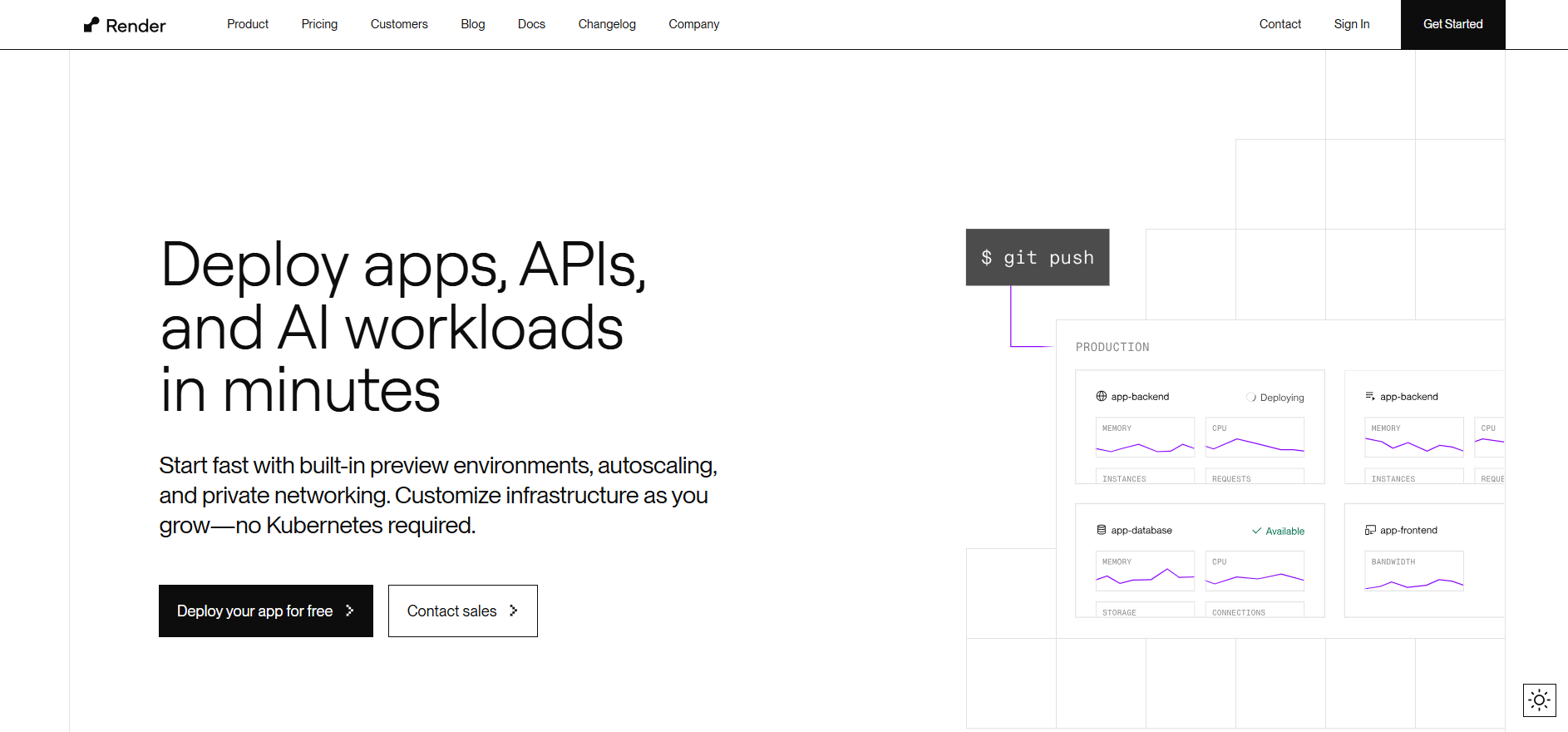 Render provides a managed cloud platform that supports web services, background workers, cron jobs, databases, and static sites. It is simple to start with, integrates directly with Git, and releases quickly with autoscaling based on basic rules.
Render provides a managed cloud platform that supports web services, background workers, cron jobs, databases, and static sites. It is simple to start with, integrates directly with Git, and releases quickly with autoscaling based on basic rules.
Best For
Teams deploying SaaS or full stack applications that need fast hosting setup without deep infrastructure knowledge.
Limitation
Scaling is not automated at the same level as Kuberns, and resource optimization may require manual adjustments.
More details: Render vs Kuberns
3. Netlify
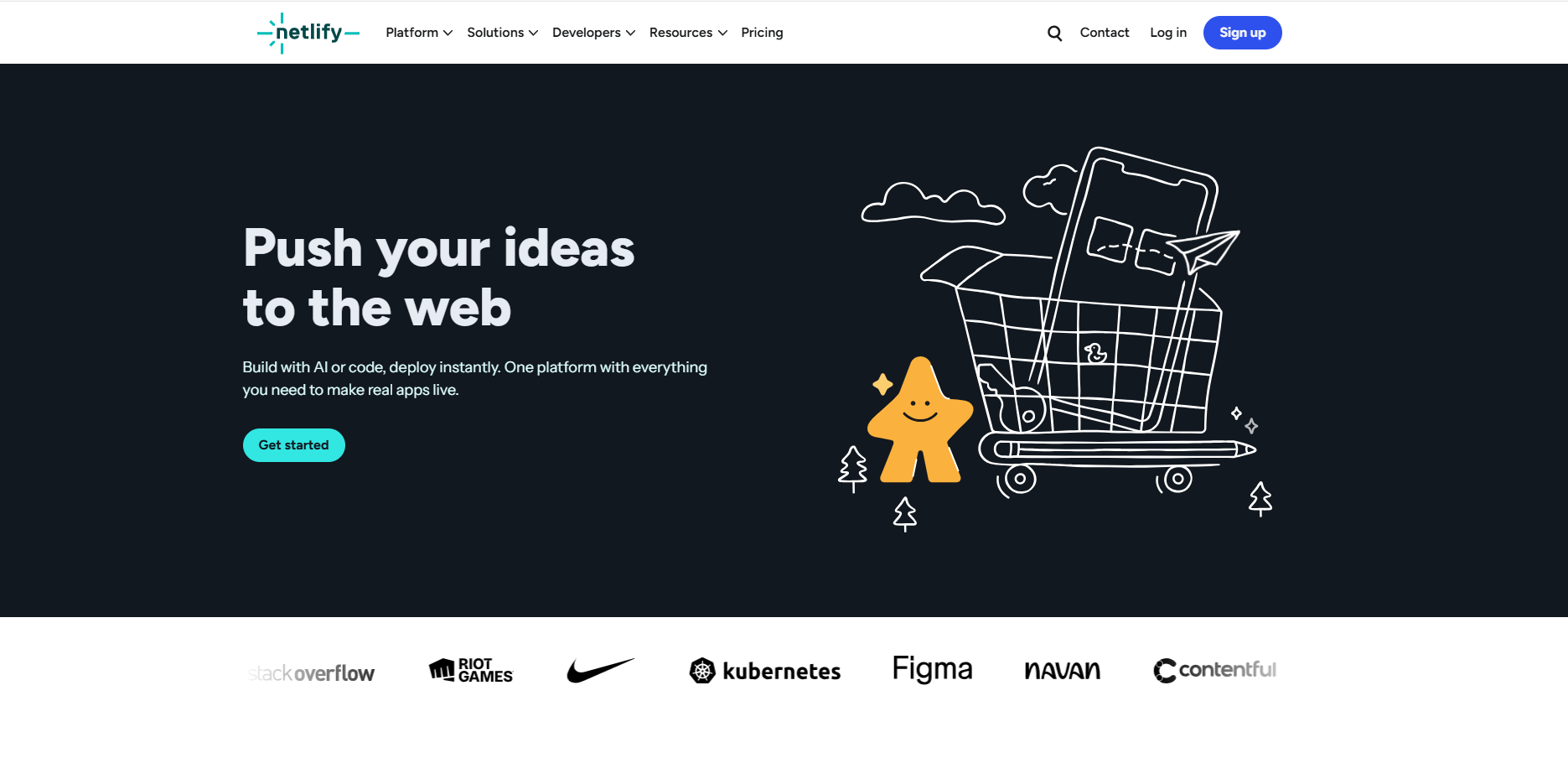 Netlify specializes in frontend deployments with serverless functions and edge optimized hosting. It is optimized for developer workflows with previews, Git automation, and framework integrations.
Netlify specializes in frontend deployments with serverless functions and edge optimized hosting. It is optimized for developer workflows with previews, Git automation, and framework integrations.
Best For
Frontend heavy apps, landing pages, and JAMstack projects that do not rely significantly on backend or databases.
Limitation
Not suitable for persistent backend services or advanced compute workloads. Teams typically need additional services for APIs and databases.
Explore alternatives: Best Netlify Alternatives
4. Vercel
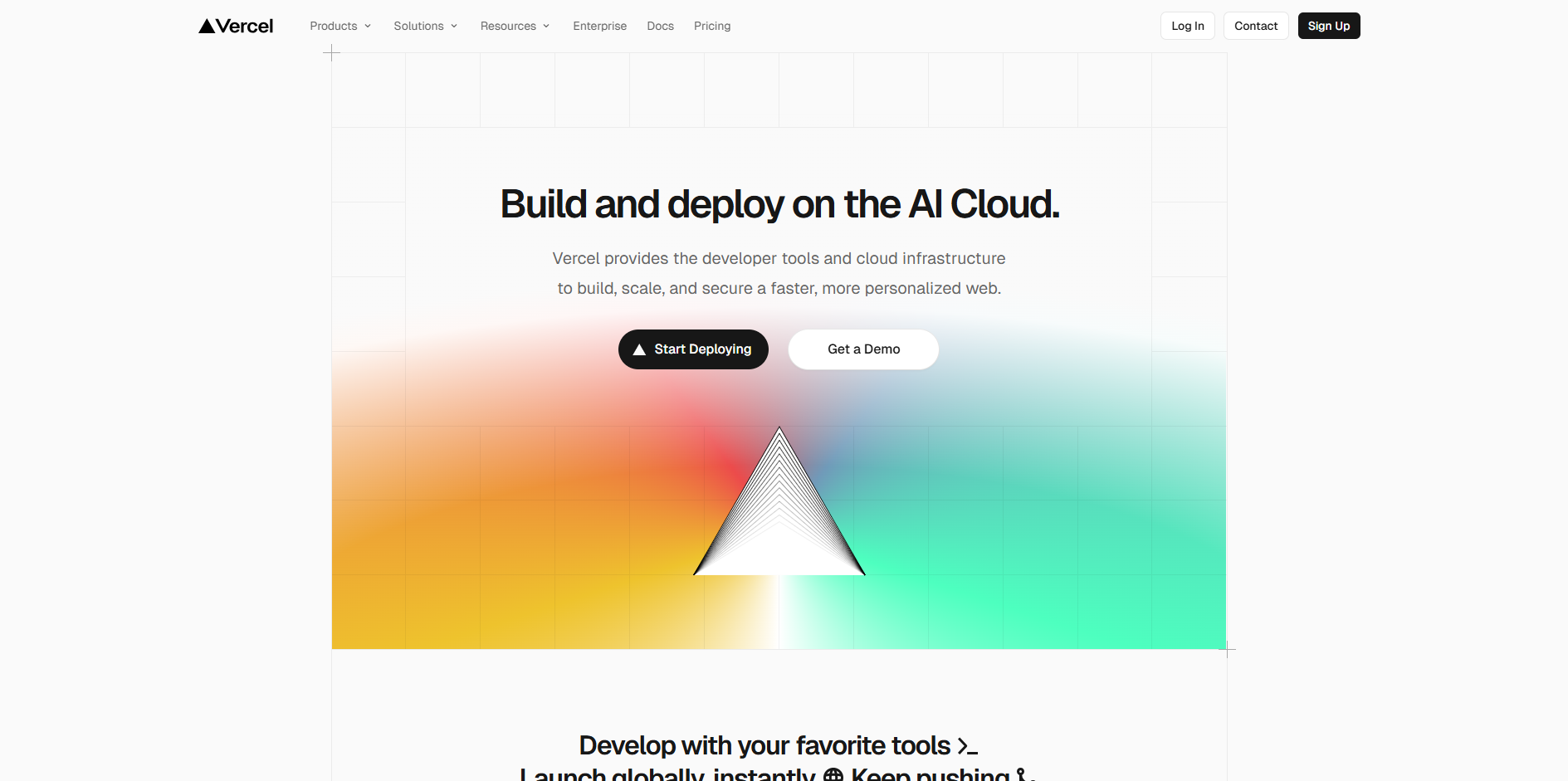 Vercel is the platform behind the Next.js ecosystem and focuses strongly on frontend performance. It delivers features like global caching, instant rollbacks, and serverless rendering for modern JavaScript applications.
Vercel is the platform behind the Next.js ecosystem and focuses strongly on frontend performance. It delivers features like global caching, instant rollbacks, and serverless rendering for modern JavaScript applications.
Best For
Frontend engineering teams building interactive and dynamic web apps with frameworks like React and Next.js.
Limitation
Backends usually require separate hosting, making it harder to scale full stack workloads efficiently.
Learn more: Vercel vs Kuberns
5. DigitalOcean App Platform
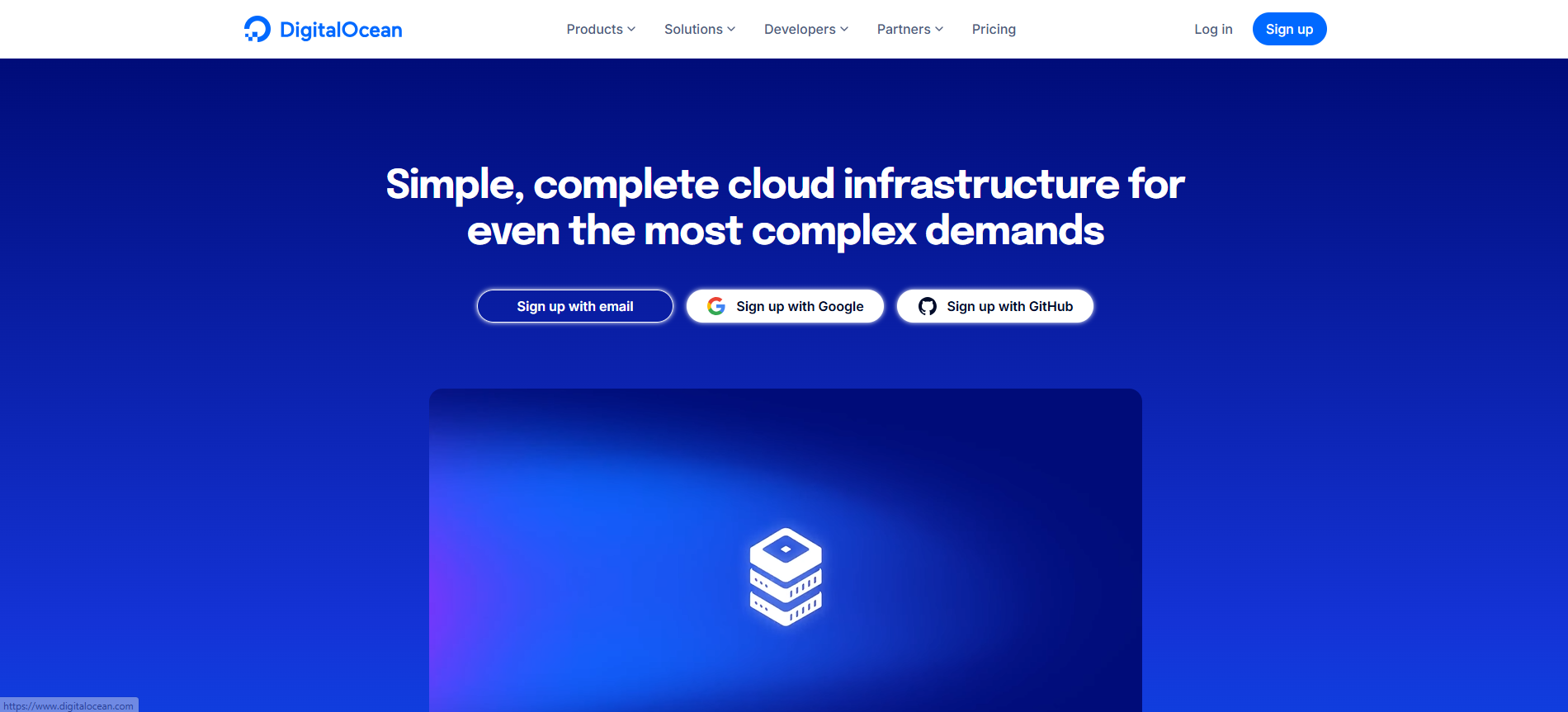 DigitalOcean App Platform makes cloud deployment accessible for small teams through predictable pricing and Docker based deployments. It handles CI builds, scaling, and SSL provisioning without heavy configuration.
DigitalOcean App Platform makes cloud deployment accessible for small teams through predictable pricing and Docker based deployments. It handles CI builds, scaling, and SSL provisioning without heavy configuration.
Best For
Startups and solo developers who want simplicity and straightforward monthly billing with minimal DevOps overhead.
Limitation
Does not offer advanced monitoring or automation features seen in Kuberns. Scaling beyond initial usage may require upgrading manually.
Recommended reading: Best DigitalOcean Alternatives for Startups and Solo Developers
Comparison Table: Best Qovery Alternatives
| Platform | Ideal Use Case | Scaling & Performance | Monitoring & Logs | Cost Efficiency | Key Limitation |
|---|---|---|---|---|---|
| Kuberns | Full stack applications, SaaS, APIs | Automated scaling with traffic awareness | Built in logs, metrics, and alerts | Saves up to 40 percent on AWS, Transparent & optimized. | Focused on automation over granular manual configuration |
| Render | Web apps, microservices, and databases | Good but not deeply automated | Basic insights available | Predictable but less optimized | Manual tuning needed as usage grows |
| Netlify | Static sites, JAMstack apps | Edge optimized for frontends | Minimal backend monitoring | Usage based pricing for small apps | Not suitable for persistent backend workloads |
| Vercel | Next.js and modern React frontends | Strong global performance | Mainly frontend focused | Can get expensive at scale | Backend requires separate hosting |
| DigitalOcean App Platform | Startups and simple full stack deployments | Manual scaling with configuration | Limited visibility into performance | Transparent and easy to understand | Growth stage automation is limited |
When Should You Choose a Qovery Alternative
Qovery works well during the early phases of development when teams want a simpler way to deploy applications on AWS without handling Kubernetes directly. It is especially useful for prototypes, internal tools, and smaller workloads. However, as applications mature, the expectations around performance, reliability, and operations begin to change.
You may outgrow Qovery when:
- Your application traffic increases and manual scaling creates performance risks
- You need stronger reliability guarantees across multiple regions
- Operational tasks such as updates, cluster management, and failover start affecting delivery speed
- You want clearer visibility into cloud spending and resource efficiency
- Your team is spending more time maintaining infrastructure instead of building product features
These challenges become more noticeable as startups transition from MVP stage to revenue generating products.
This is where a managed automation first platform like Kuberns becomes a better fit. It removes cluster management entirely, improves uptime with real time scaling decisions, and helps teams reduce AWS infrastructure costs by up to 40 percent while delivering faster.
To understand how teams optimize their cloud budget while scaling, read: How to Reduce AWS Cost
Why Kuberns Is the Right Qovery Alternative for Scaling Teams
As products grow beyond the MVP stage, teams need more than simplified Kubernetes deployments. They need a platform that guarantees stability, lowers cloud costs, and removes DevOps complexity without limiting flexibility. This is exactly where Kuberns becomes the stronger choice over Qovery.
Kuberns takes care of the infrastructure layer completely, including:
- Automated provisioning of secure production environments
- Real time scaling that adjusts to traffic demand
- Built in monitoring, logs, and performance alerts
- Zero maintenance of clusters, control planes, or nodes
- Seamless CI to deployment workflow from GitHub or GitLab
Where Qovery still expects some ongoing infrastructure awareness and optimization, Kuberns delivers a fully managed experience that helps developers stay focused on product innovation. With AWS powering the underlying infrastructure, performance and reliability remain consistent at every stage of growth.
Teams also benefit from significant cloud savings. Kuberns helps reduce AWS usage costs by up to 40 percent, which becomes increasingly important once applications reach scale.
In short, Kuberns offers:
- Full stack deployment without Kubernetes knowledge
- Stability and uptime backed by AWS global infrastructure
- Developer productivity with fewer operational tasks
- Cost efficiency that compounds as your workload expands
This makes Kuberns the smarter long term Qovery alternative for startups and enterprises that want to grow fast without taking on operational burden.
Learn more about how Kuberns simplifies cloud operations: AI in DevOps and Developer Workflow
Final Thoughts
Qovery has helped many teams adopt Kubernetes more easily, but it still requires developers to think about cluster scaling, node health, monitoring integrations, and cost optimization on their own. As applications gain more users, these responsibilities begin to compete with product development and can slow down release cycles.
Modern teams are now prioritizing platforms that remove operational overhead and give them stronger control over outcomes like uptime, performance, and predictable cloud spending. That is where Kuberns stands out as a smarter Qovery alternative. It automates provisioning, scaling, monitoring, and cost efficiency while running on trusted AWS infrastructure. This gives teams a deployment platform that is reliable from day one and continues to support them as they scale globally.
If you want to build products faster, deliver better performance for users, and eliminate infrastructure stress, Kuberns makes cloud deployment straightforward and cost effective.
Deploy your next application with Kuberns and see the difference Start now at Kuberns

FAQs
1. Why do developers look for Qovery alternatives
Teams often outgrow Qovery when they need deeper automation, built in monitoring, or lower AWS costs. Kuberns offers all of these benefits with zero DevOps overhead.
2. What is the best Qovery alternative in 2025
Kuberns is one of the best Qovery alternatives because it supports full stack deployments with automated scaling, real time monitoring, and up to 40 percent savings on cloud costs.
3. Does Kuberns replace the need for managing Kubernetes
Yes. Kuberns runs on AWS infrastructure and abstracts all Kubernetes complexity. Developers do not need to create clusters or write deployment files.
4. Can I deploy backend and container workloads on Kuberns
Yes. Kuberns supports APIs, microservices, background jobs, and container based architectures with one click Git deployment.
5. How fast can I migrate from Qovery to Kuberns
Migration is simple. Connect your Git repository, configure environment variables, and deploy. No manual infrastructure setup is needed.